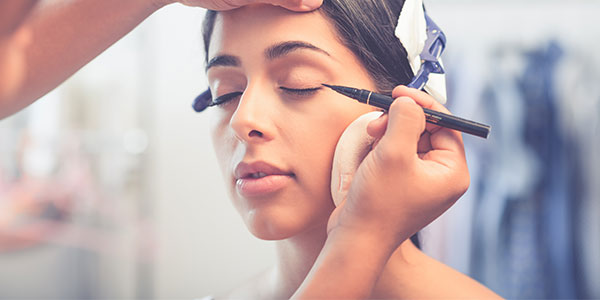When you’re going for that smoky-eye look, bacteria and fungi aren’t top of mind. But mascara, eyeliner and other eye makeup can cause infections and injuries when not used properly. Learn how to protect your eyes while still wearing your favorite cosmetics with tips from Virginia Ko, O.D., an optometrist with Sutter Health.
Keep it Clean
Every time you apply eye makeup, you transfer some bacteria from your lashes or skin to the product. Over time, bacteria can multiply and lead to eye infections.
“It’s good to replace eye makeup every three months so you don’t worry about bacterial growth,” Dr. Ko says. It’s most important to replace mascara and liquid eyeliner, she says, but bacteria can also build on eye shadow if you don’t keep your brushes clean.
Always wash off the day’s makeup before you go to bed — even if you have lash extensions. “I tend to see more infections in people who don’t remove their eye makeup every night,” Dr. Ko says.
Don’t swap eye makeup with friends or you could end up trading germs, too. It’s safest to avoid makeup “testers” in stores, but if you can’t resist trying on that new shade, always use single-use applicators.

Dodge Injury and Irritation
Resist the temptation to apply makeup in the car or on the bus — a bump or sudden slowdown could lead to an eye injury. “I do see some people who get a corneal abrasion from the mascara brush or even an eyelash curler if they’re not careful,” Dr. Ko says.
If you wear contact lenses, Dr. Ko recommends water-soluble eye makeup because waterproof products can build up on the lenses, causing irritation. “I’ve seen cases where a hard piece of mascara gets embedded in the cornea, especially in a contact lens wearer — the contact lens just pushes it in,” she says. Ask your eye doctor for a list of contact-lens compatible cosmetics.
And color outside the (lash) lines. Applying makeup inside the lash line can clog oil glands in the eyelid and increase dryness. “Oftentimes people get irritation and eye redness, and it can make them more prone to developing a stye, which is a bigger plugged oil gland,” Dr. Ko says.
Avoid Harmful Ingredients
If you want to avoid an allergen or have concerns about certain additives, check products’ ingredients carefully. Cosmetics sold in the United States must list ingredients (sometimes they’re on tear-off sheets next to the store display). You can also check the FDA’s list of approved cosmetic color additives.
Steer clear of these eye makeup ingredients:
- Kohl: The word “kohl” sometimes describes an eye makeup color, but it’s also a traditional eye cosmetic used in Asia and Africa. Because it contains lead, U.S. cosmetics prohibit kohl. Don’t buy potentially kohl-containing cosmetics made overseas and beware of products that don’t disclose all ingredients.
- Glitter: Metallic or glittery cosmetics can send flakes into your eyes, irritating or even scratching the cornea, especially if you wear contacts.
- Mascara with “fibers”: Some mascaras contain little fibers designed to make lashes look longer. Skip them because those fibrils can creep into and irritate your eyes.
When to See a Doctor
“If you have sticky discharge in your lashes in the morning, or it’s hard to open your eye and the eye is red, that probably signifies an infection,” Dr. Ko says. Check with your doctor to see if you need prescription antibiotic eye drops.
If an eye infection starts, stop wearing cosmetics until it clears up, and immediately throw away any eye makeup that you’ve recently used, she says. “If you develop blepharitis (eyelid inflammation), use diluted baby shampoo on a washcloth or Ocusoft lid wipes to clean.”
More Resources
Healthwise Resource Library
Look up helpful health information.
Patient Information
Practical info for Sutter patients.
Tools and Quizzes
Online tools to help you make decisions about your health.









